The Story of Culture and Arts
- Image resource of Korean history
- Documents from History TextBooks
- Culture & Art Stories from Korean History
- Culture & Art Stories from Korean History - Korean
- National Institute of Korean History
- History net
- About the site
- Introduce
-
Numerous topics related to Korean culture and art are mentioned in middle and high school national history textbooks, but most of them are briefly described by era, making it difficult to understand their concepts, transition processes, and characteristics.
<Culture & Art Stories from Korean History> produces and provides video materials based on expert commentary on the flow, change process, characteristics and characteristics of each major topic in the field of culture and art in Korean history.

Scenario
A man is combing quickly over a rugged mountainside. What could he be seeking?
He found some wild mountain ginseng, well-known to Koreans as the foremost medicinal herb. While ginseng is excavated wild in the mountains, it is also planted and cultivated in fields.
So, how long has ginseng been cultivated in Korea?
How Long Has Ginseng Been Cultivated in Korea?
Here is Daegu’s Yangnyeong Market, where various medicinal herbs are bought and sold. Daegu’s Yangnyeong Market has been selling all varieties of medicinal herbs since the Late Joseon period.
Ginseng played a particularly vital role in the development of medicinal herbs in oriental medicine. It was a commonly traded ingredient back then, and still is today.
While today we call wild ginseng sansam and farm-grown ginseng insam, our ancestors called both types just insam.
Ginseng aids the five viscera and gives peace of mind … It is a good treatment for improving eyesight and those who have a cold stomach or intestines. It improves memory, and if taken for long periods, eases the body and extends one's life. - Hyangyakjipseongbang [Collected Prescriptions of Korean Medicines]
We can also verify the efficacy of ginseng in the Korean medical text, Hyangyakjipseongbang [Collected Prescriptions of Native Medicines], which dates back to King Sejong of Joseon in the 15th century.
Ginseng harnesses a wide range of benefits. Even neighboring countries were aware of them.
Is that so? When Silla envoys traveled to the Tang Court, they brought sansam as a gift.
Was ginseng famous because it could only be found in Korea? No. It was famous because the quality of the ginseng grown in Korea was far superior to that of other countries.
“The reason Korean mountain ginseng is so good is because of the topography and environment. The soil and climate create the perfect environment for growing mountain ginseng.” Song Juntae, Curator/ Ginseng Museum
The amount listed in the gongan [or tribute ledger, a book detailing tribute items and quantities] equals 960 geun for Pyeongan-do and Hwanghae-do together. - Veritable Records of King Sejong, June 8, 1435 (Year 17 of King Sejong)
During the reign of King Sejong, out of 329 prefectures, more than a third of them, or 112, paid ginseng to the central government as tribute. Pyeongan-do and Hwanghae-do alone gave almost 1,000 geun of ginseng as tribute in just one year.
Normally, in one year, around 1,900 geun of ginseng is gifted to the king. - Veritable Records of King Seonjo, March 17, 1601 (Year 34 of King Seonjo)
Also, during the reign of King Seonjo, it is said that nearly 1,900 geun from around the country were gifted to the king.
In the late Joseon Dynasty, as international trade grew and there was greater domestic demand for ginseng, the supply of ginseng was too low to meet demand. The answer to this was farmed ginseng, or gasam.
“In the Late-Joseon period, because of the rise in demand, people began to heavily farm ginseng. And now that there were fields that grew ginseng, Koreans were able to meet tribute and international trade demands easily.” Jang Myeong-hwan, Researcher / Yeongju Ginseng Research Institute
As mountain ginseng has grown scarce, the cultivation of ginseng has become a custom. - Seungjeongwon ilgi [Diary of the Royal Secretariat], August 20, 1790 (Year 14 of King Jeongjo)
During the reign of King Jeongjo in the late 18th century, the farming of ginseng became customary. It was a great remedy for dealing with the depleted supply of wild ginseng. As a result of ginseng cultivation, the trading of ginseng grew and became much more active.
Why Did They Make Hongsam?
There are several different names for ginseng depending on how it was processed- susam, geonsam, hongsam, and more.
So why is ginseng processed in so many different ways?
Susam, or fresh ginseng, is the name for freshly picked ginseng. Fresh ginseng has high levels of moisture and so is very prone to molding. Therefore, it is difficult to store this kind of ginseng for longer than a week.
As a result, geonsam, or dried ginseng, was then produced, where the ginseng root was dried after removing its skin. But, while geonsam could be stored for long periods of time, its biggest flaw was that it broke easily during shipment.
To combat this, they developed hongsam, or red ginseng, which is much more familiar to Koreans today.
Ginseng is steamed for twenty-four hours in large earthen jars and is then partially dried in a room kept at a high temperature by charcoal. The final drying is effected by exposing the roots in elevated flat baskets to the rays of the bright winter sun. - Isabella Bird Bishop, “Korea and Her Neighbours”
During the reign of King Gojong, Isabella Bird Bishop visited the Korean kingdom on about four occasions. She wrote an account of her travels, and in it appears a description of the process for making hongsam.
How was hongsam, which took a comparatively long time to make, different from susam or geonsam?
“After hongsam has grown in a field for six years and been harvested, it goes through three steps; first, its roots are washed, then it is steamed, and finally, it is dried.” Lee Yong-jin, Plant Manager / Gimpo Paju Ginseng Nonghyeop, Former Head Plant Manager
Once hongsam has been steamed and dried, it has a lower moisture content and is much tougher. It is less prone to developing mold and one doesn’t have to worry about it breaking. Thus, it is said to be easy to store and transport.
In the late 18th century, as cultivated ginseng was able to fulfill the ever-increasing demand for ginseng, a new preservation method was born – hongsam.
Since hongsam gave ginseng a longer expiration date, most of the ginseng exported to China in the late 19th century was said to be hongsam.
Why did envoys to China carry ginseng?
It is a Japanese custom that one must take ginseng if ill. If trade were to be halted, they would fight to the death to get it. There was no choice but to approve trade. - Yi Ik, Seonghosaseol [Miscellaneous Explanations of Seongho Yi Ik]
According to Yi Ik's Seonghosaseol, the Japanese considered ginseng a powerful medicine and were willing to fight and die to buy it. Thanks to this belief in its potency among those of neighboring countries, ginseng was treated as an important gift in international diplomacy.
At the time, ginseng was managed by the government through a system. One could not trade ginseng privately.
In the late Joseon period, each of the 30 Joseon envoys to China could bring 80 geun to China. Eighty geun is said to have been worth about 2,000 nyang of silver, making ginseng an extremely lucrative item.
“In small amounts, ginseng’s worth was more than that of several coins. It could be converted to cash on the spot, which helped cover expenses.” Song Jung-tae, Curator / Yeongju Ginseng Museum
The advent of hongsam opened a new chapter in ginseng trade. Right at this time, Gaeseong began to rise in renown through the hongsam trade.
Many wealthy merchants from Gaeseong with large amounts of capital dumped lots of money into cultivating ginseng, which led to the majority of Joseon ginseng being grown in the Gaeseong region.
Particularly in the 19th century, as Gaeseong gained exclusive production rights and created a monopoly, the reputation of Gaeseong hongsam skyrocketed.
Expansive efforts to develop ginseng have continued to the present day.
Ginseng, which has continued to develop over the years, is the precious result of our ancestors' tireless efforts.
[Epilogue]
Must-Know Facts on Culture and Art in Korean History
1. In the late Joseon Dynasty, to meet the demand for ginseng, Koreans began to cultivate it, calling this cultivated variety gasam.
2. Hongsam is made by steaming and drying ginseng to allow it to be preserved for longer periods.
3. Ginseng was widely used in international trade and made famous by Gaeseong merchants.
Life & Folklore
17 films-
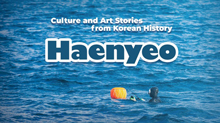 Haenyeo, female divers in Jeju08:52
Haenyeo, female divers in Jeju08:52 -
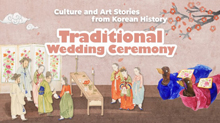 Traditional Wedding Ceremony08:22
Traditional Wedding Ceremony08:22 -
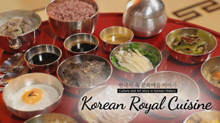 Korean Royal Cuisine08:22
Korean Royal Cuisine08:22 -
 Gat and Traditional Headwear of Korea08:48
Gat and Traditional Headwear of Korea08:48 -
 Managing Epidemics throughout Korean History08:48
Managing Epidemics throughout Korean History08:48 -
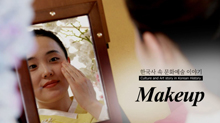 Makeup07:52
Makeup07:52 -
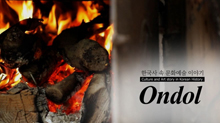 Ondol, Korea's Underfloor Heating System08:40
Ondol, Korea's Underfloor Heating System08:40 -
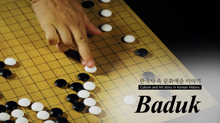 Baduk08:32
Baduk08:32 -
 Four Treasures of the Study09:34
Four Treasures of the Study09:34 -
 Farming Implements09:12
Farming Implements09:12 -
 Coming-of-Age Ceremony08:41
Coming-of-Age Ceremony08:41 -
 Ginseng08:44
Ginseng08:44 -
 Tobacco08:27
Tobacco08:27 -
 Kimchi08:37
Kimchi08:37 -
 Relief Crops08:37
Relief Crops08:37 -
 Korean Currency09:28
Korean Currency09:28 -
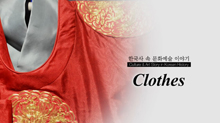 Clothes08:20
Clothes08:20

